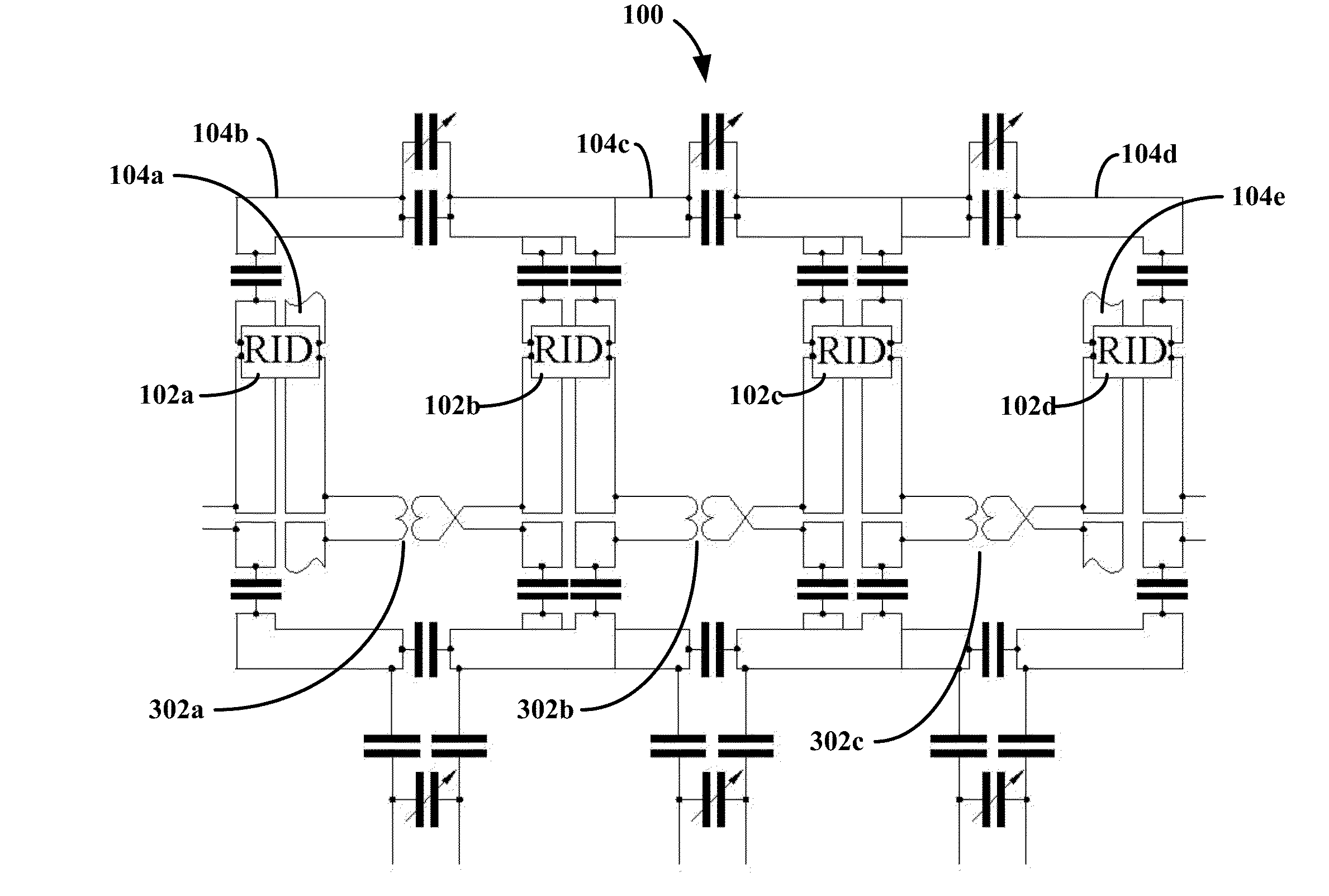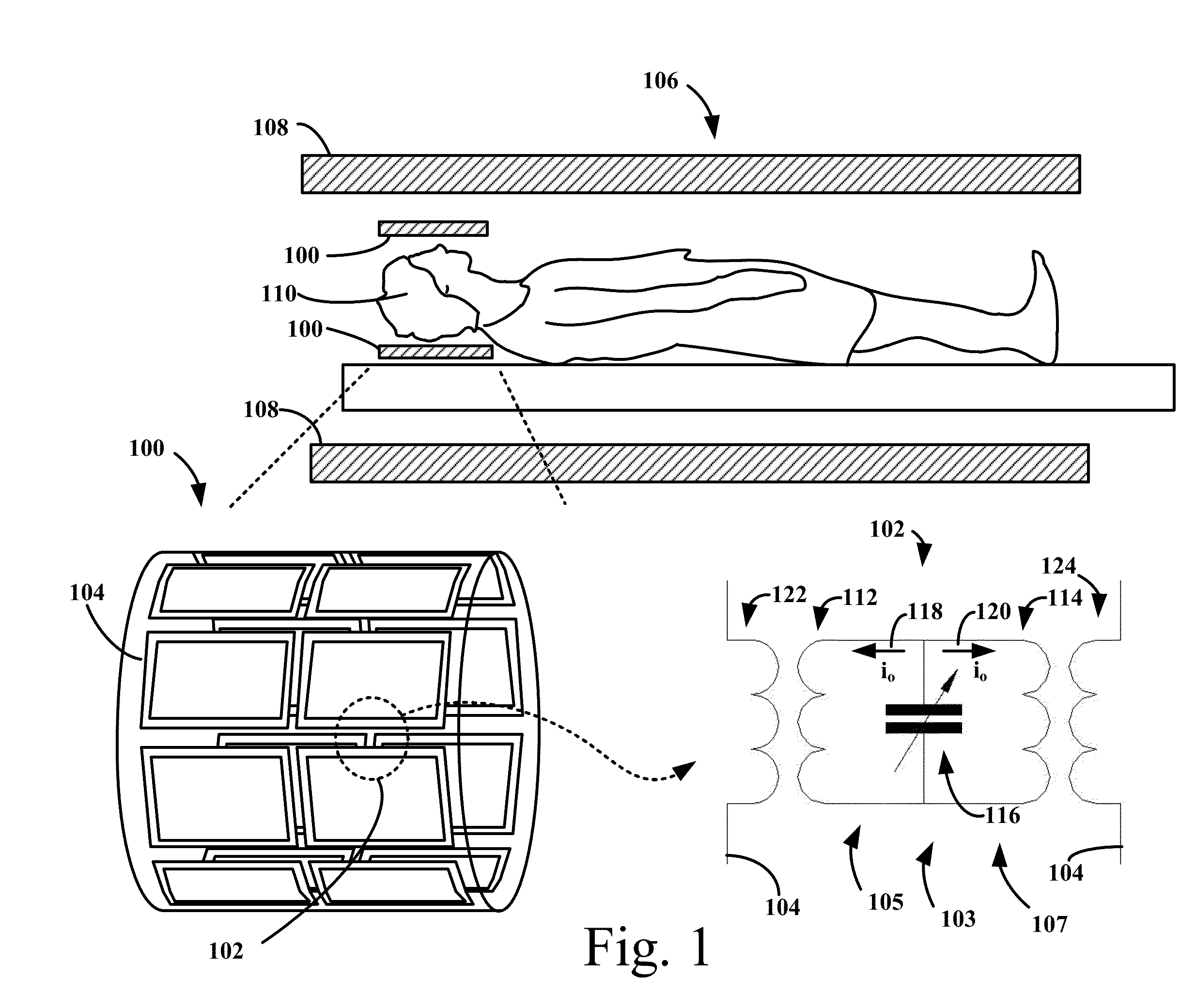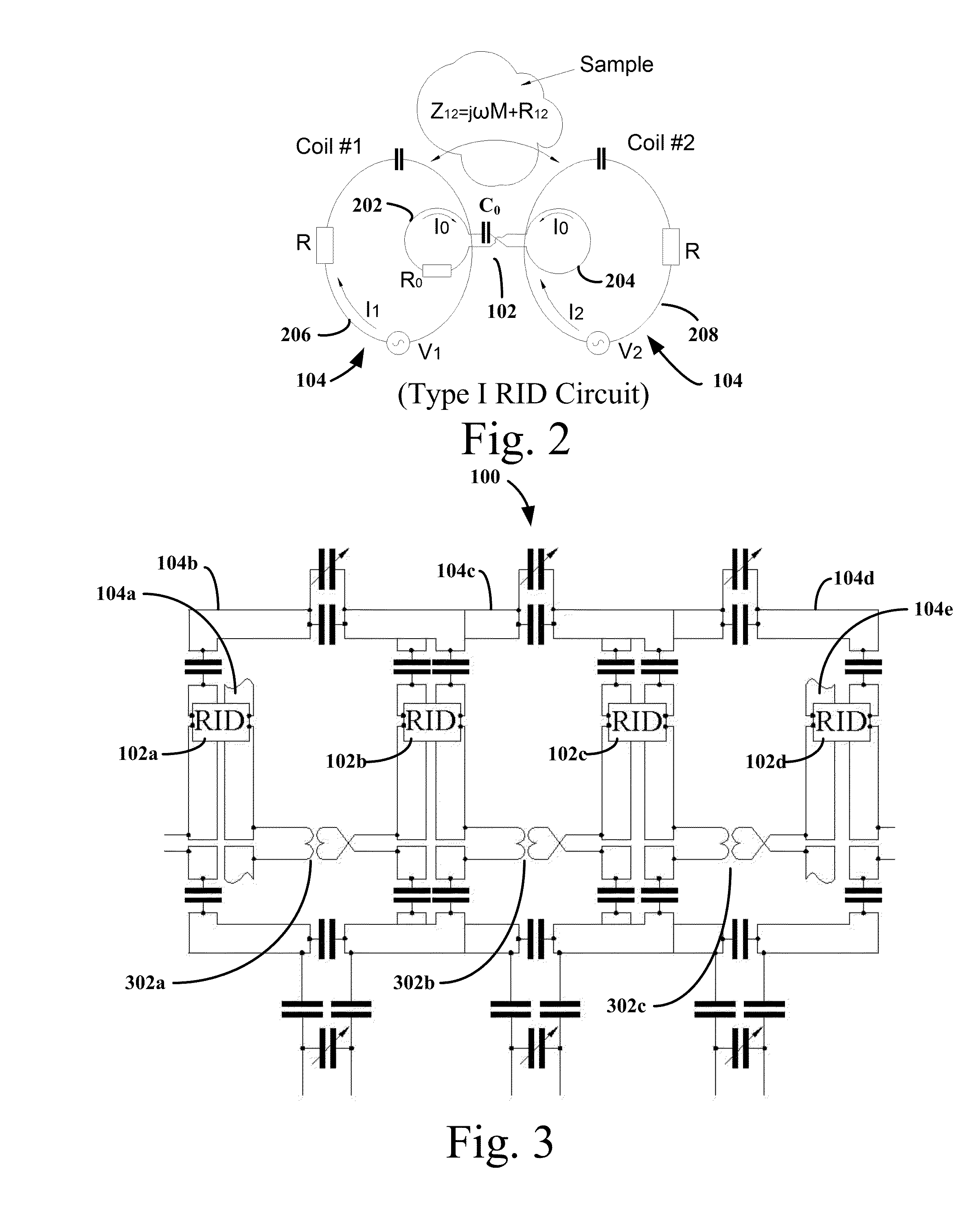Magnetic-Resonance Transceiver-Phased Array that Compensates for Reactive and Resistive Components of Mutual Impedance between Array Elements and Circuit and Method Thereof
a phased array and array element technology, applied in the field of decoupling methodologies and circuits thereof, can solve the problems of increasing rf inhomogeneity, limiting the obtainable decoupling by as much as 10 db, and affecting the sensitivity of the array elemen
- Summary
- Abstract
- Description
- Claims
- Application Information
AI Technical Summary
Benefits of technology
Problems solved by technology
Method used
Image
Examples
Embodiment Construction
[0020]In a first embodiment of the invention, there is provided a novel method of compensating for cross-talk between pairs of adjacent array elements of a transceiver phased array for a magnetic resonance (MR) system. The transceiver phased array includes array elements circumscribing a sample. In an embodiment, a method of operating a transceiver phased array decoupled using the illustrative embodiment is provided. The transceiver phased array is operated in the MR system to produce a dataset of the sample. The dataset may be used to derive (i) an image using various described MR imaging modalities or (ii) spectroscopic data using various measurement modalities described herein. The transceiver array elements, i.e. RF antennas, may be configured as surface coils used for both for transmission and reception of RF signals. During transmission and reception, the pair of array elements has cross-talk characterized as mutual impedance therebetween, which may include both resistive and ...
PUM
 Login to View More
Login to View More Abstract
Description
Claims
Application Information
 Login to View More
Login to View More - R&D
- Intellectual Property
- Life Sciences
- Materials
- Tech Scout
- Unparalleled Data Quality
- Higher Quality Content
- 60% Fewer Hallucinations
Browse by: Latest US Patents, China's latest patents, Technical Efficacy Thesaurus, Application Domain, Technology Topic, Popular Technical Reports.
© 2025 PatSnap. All rights reserved.Legal|Privacy policy|Modern Slavery Act Transparency Statement|Sitemap|About US| Contact US: help@patsnap.com



